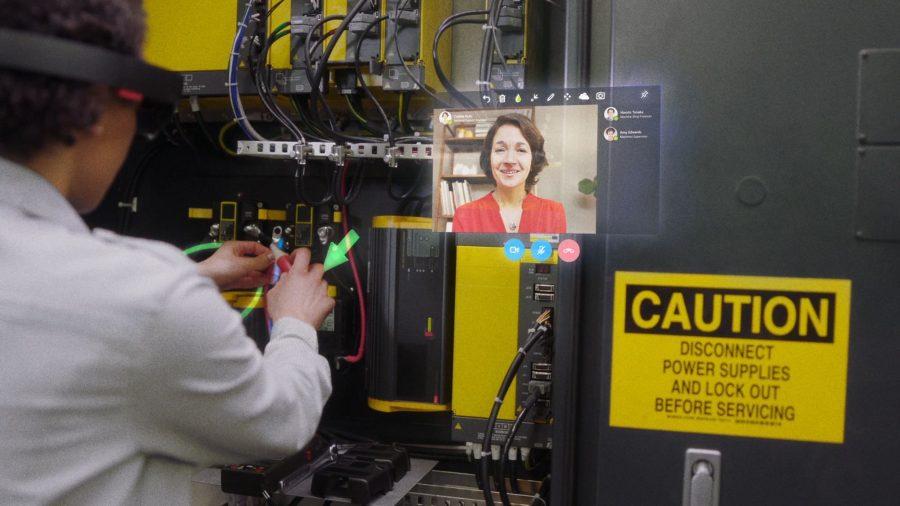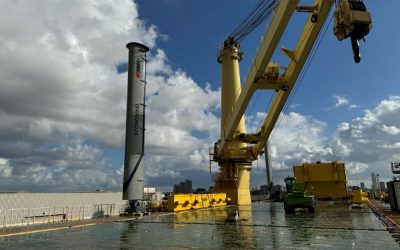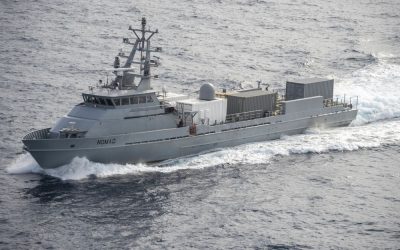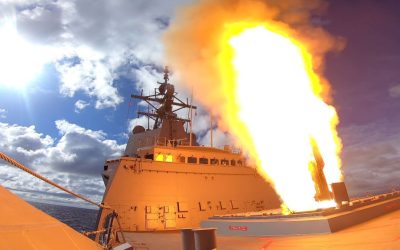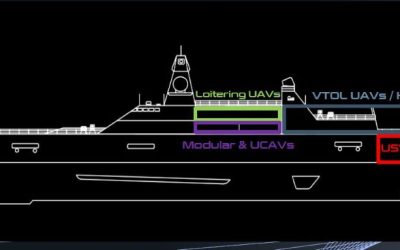The digital era is ushering in a new phase of technological advancements that will revolutionize maritime defence. Extended reality (XR), artificial intelligence (AI), secure connectivity, and data collection are just a few of the solutions that the Royal Navy can leverage to enhance operations, maintenance, navigation, and mission management.
As Fairbanks Morse Defense explains, immersive technologies like XR play a critical role in enhancing situational awareness for naval personnel. By overlaying vital information onto their field of view, XR provides augmented data, including navigational data, radar information, and target tracking. This empowers personnel to make informed decisions swiftly and accurately, whether they are operating crewed or uncrewed vessels.
An important aspect of XR’s application in naval operations is its role in supporting uncrewed vessels. XR, paired with anomaly detection and remote support technologies, allow for the support and monitoring of ship functions and proactively troubleshooting any issues before conventional monitoring systems can detect them. Detailed data on anomalies can be captured, expediting repairs, improving planning, and reducing lead times.
Detecting and addressing potential equipment failures requires strong AI algorithms that can learn in place while providing visibility to support teams via XR technologies, especially with future uncrewed vessels. By analysing vast amounts of sensor data, AI systems can identify patterns and anomalies, alerting remote technicians to potential issues and facilitating timely interventions. This proactive maintenance approach enhances operational readiness and minimizes the risk of unexpected breakdowns.
The Royal Navy is already investing in modern technology, such as virtual reality (VR) simulations, to train sailors in navigating and manoeuvring ships. Through initiatives such as Project Selborne, sailors can don VR headsets and enter a simulation that replicates a ship’s bridge, offering realistic and interactive training scenarios.
The software developed for the headsets recreates entire fleets, harbours, waterways and realistic weather conditions with life-like precision. From sailing individually or with an auxiliary from one port to another, to managing complex activities like replenishment at sea, sailors gain hands-on experience and enhance their decision-making skills and response capabilities through AI-powered simulations. Simulations of this type are currently taking place at HMS Collingwood, the Royal Navy’s Maritime Warfare School in Fareham.
XR also provides realistic and interactive training scenarios, even when technicians are at sea, allowing them to gain hands-on experience in various operational contexts, and AI-powered simulations can replicate complex scenarios, enabling sailors to enhance their decision-making skills and response capabilities.
In addition to supporting uncrewed vessels and training, XR and the Internet of Things (IoT) offer valuable capabilities for crewed vessels. By providing access to system data in a shared virtual space, XR and IoT enable efficient resource utilization, training opportunities, troubleshooting capabilities, and streamlined repairs anywhere in the world.
